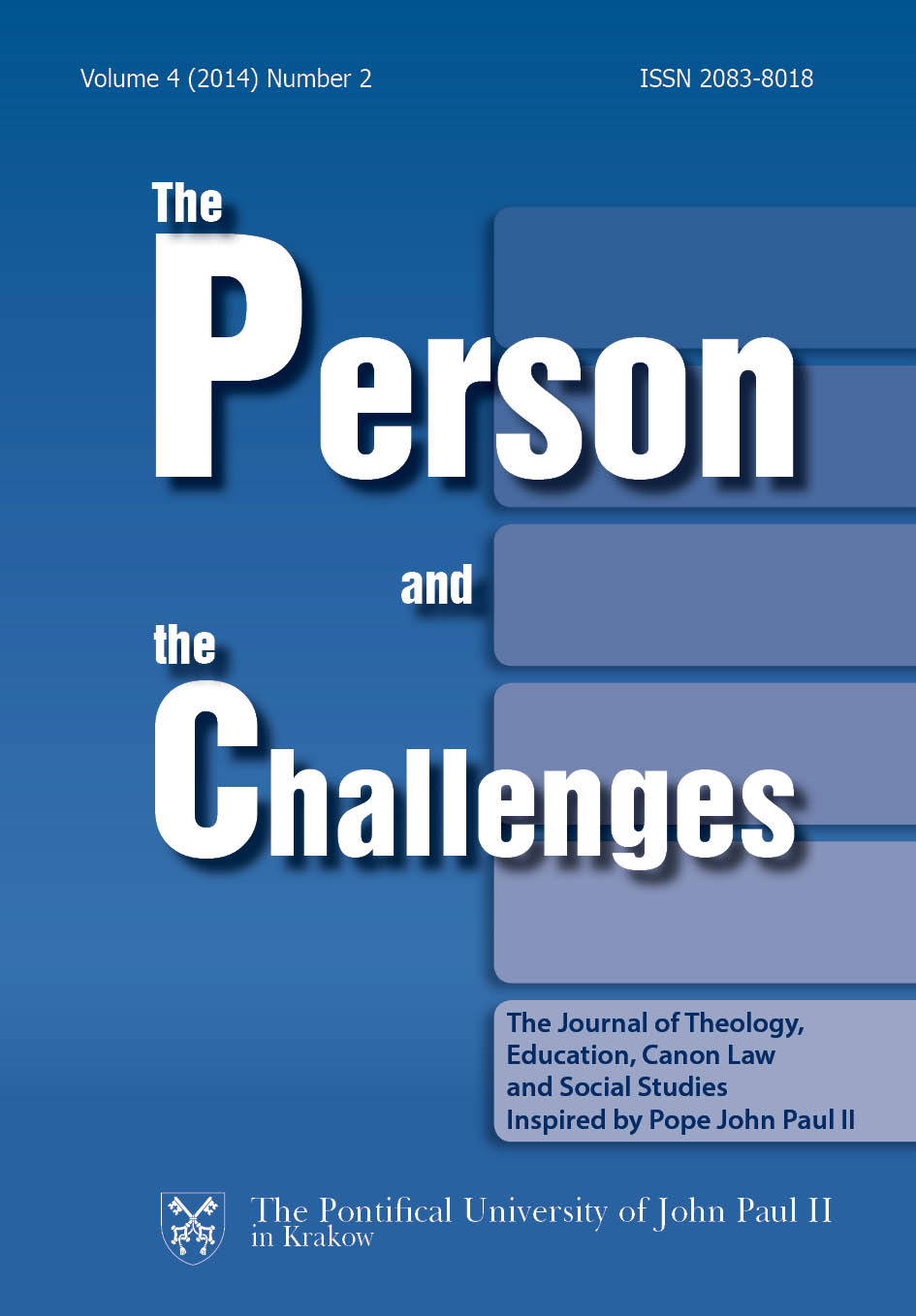The Rabbinic Anti-Gospel in the Context of the Polemic between the Synagogue and the Church
DOI:
https://doi.org/10.15633/pch.660Keywords:
Rabbinic sources, anti-gospel, polemic between Synagogue and ChurchAbstract
This article tries to find the answers to the following questions: Can one find, in the Rabbinic writings (the Tosefta, Jerusalem Talmud and Babylonian Talmud), some texts that refer to Jesus and His followers? What is their nature? Do they include anti-Christian undertones and constitute a specific Rabbinic anti-gospel: the rabbis’ well-thought and thorough reaction to the content included in the Gospels? The author in his answers used the detailed research presented in his latest monograph entitled Jesus and His Followers in the Talmud. A Textological, Historical and Sociological Analysis, Lublin 2013. His investigation leads him to the conclusion that in Talmudic narratives Rabbis created a specific anti-gospel which was initially transmitted verbally and then written down in various contexts of their works. The aim of this anti-gospel is to challenge the authority of Jesus of Nazareth as the Son of God and the Messiah from the house of David. Rabbinic narratives wish to show in a clear way that Jesus must not usurp any messianic and divine prerogatives. In the earlier times rabbis warned Jewish community against magic power and the attractiveness of the doctrine advocated by heretics. Subsequent rabbis showed the weakness and stupidity of heretical teaching, whose contradictions and lack of logic were easy to disprove by making use of proper argumentation. Jewish sages wished to prove the superiority of the Rabbinic doctrine and the biblical presentation they offered, over the Christian faith.
References
Boyarin D., Border Lines: The Partition of Judaeo-Christianity, Philadelphia: University of Pennsylvania Press 2004.
Chrostowski W., Rabiniczny wizerunek Jezusa i chrześcijaństwa w kontekście dialogu Kościoła z Żydami i judaizmem, in: Jezus i chrześcijanie w źródłach rabinicznych: Perspektywa historyczna, społeczna, religijna i dialogowa, „Estetyka i Krytyka” nr 27 (3/2012), ed. K. Pilarczyk – A. Mrozek, Kraków: Uniwersytet Jagieloński 2012, p. 341–357.
Goldstein M., Jesus in the Jewish Tradition, New York: The Macmillan Company 1950.
Goodman M., The Function of Minim in Early Rabbinic Judaism, in: Geschichte-Tradition-Reflexion. FS M. Hengel, ed. H. Cancik, t. 1, Tübingen: J. C. B. Mohr [Paul Siebeck] 1996, p. 501–510.
Herford R. T., Christianity in Talmud and Midrash, London: Williams & Norgate 1903.
Hirsch J., Regard Talmudique sur la Tradition Chretienne, Paris: Connaissance et Savoirs 2007.
Iluk J., Żydowska politeja i kościół w Imperium Rzymskim u schyłku antyku, vol. 2. Żydowska antyewangelia: Antyczna tradycja i nowożytne trwanie, Gdańsk: Wydawnictwo Uniwersytetu Gdańskiego 2010.
Instone-Brewer D., Traditions of the Rabbis from the Era of the New Testament, vol. 1–2A, Grand Rapids: William B. Eerdmans Publishing Company 2004.
Instone-Brewer D., Jesus of Nazareth’s Trial in the Uncensored Talmud, “Tyndale Bulletin” 62 (2011), p. 269–294.
Jaffé D., Le Judaïsme et l’Avènement du Christianisme. Orthodoxie et Hétérodoxie dans la Literature Talmudique Ier-IIe siècle, Paris: Cerf 2005.
Jaffé D., Le Talmud et les Origins Juives du Christianisme. Jésus, Paul et les Judéo-chrétiens dans la Littératurs Talmudique, Paris: Cerf 2007.
Kalmin R., “Christians and Heretics in Rabbinic Literature of Late Antiquity”, HTR 87 (1994), p. 155–169.
Lipiński E., Pandera and Stada, “Studia Judaica” 11 (2008) nr 2 (22), p. 205–213.
Maier J., Jesus von Nazareth in der talmudischen Überlieferung, Darmstadt: Wissenschaftliche Buchgesellschaf 1978.
Neusner J., Rabbinic Literature and the New Testament: What we Cannot Show we do not Know, Valley Forge: Trinity Press International 1994.
Neusner J., Rabin rozmawia z Jezusem, Kraków: Wydawnictwo M 2010.
Pilarczyk K. – Mrozek A. (eds.), Jezus i chrześcijanie w źródłach rabinicznych: Perspektywa historyczna, społeczna, religijna i dialogowa, „Estetyka i Krytyka” nr 27 (3/2012), Kraków: Uniwersytet Jagieloński 2012.
Schäfer P., Jesus in the Talmud, Princeton: Princeton University Press 2007.
Schäfer P., The Jewish Jesus: How Judaism and Christianity Shaped Each Other, Princeton & Oxford: Princeton University Press 2012.
Schiffman L., Who was a Jew?: Rabbinic and Halakhic Perspectives on the Jewish-Christian Schism, Hoboken: Ktav Publishing House, 1985.
Visotzky B. L., Prolegomenon to the Study of Jewish Christianities in Rabbinic Literature, in: Fathers of the World: Essays in Rabbinic and Patristic Literature, ed. B. L. Visotzky, Tübingen: J. C. B. Mohr [Paul Siebeck] 1995, p. 129–149.
Wróbel M. S., Krytyka tekstologiczna i historyczna passusów Talmudu o Jezusie i chrześcijaństwie, in: Jezus i chrześcijanie w źródłach rabinicznych: Perspektywa historyczna, społeczna, religijna i dialogowa, „Estetyka i Krytyka” nr 27 (3/2012), ed. K. Pilarczyk – A. Mrozek, Kraków: Uniwersytet Jagieloński 2012, p. 15–50.
Wróbel M. S., Jesus and His Followers in the Talmud. A Textological, Historical and Sociological Analysis, Lublin: Wydawnictwo KUL 2013
Downloads
Published
Issue
Section
License
Copyright (c) 2015 Mirosław S. Wróbel

This work is licensed under a Creative Commons Attribution 4.0 International License.
Authors who publish with this journal agree to the following terms:
- Authors retain the copyright and full publishing rights without restrictions, and grant the journal right of first publication with the work simultaneously licensed under a Creative Commons Attribution 4.0 International License that allows others to share the work with an acknowledgement of the work's authorship and initial publication in this journal.
- Authors are able to enter into separate, additional contractual arrangements for the non-exclusive distribution of the journal's published version of the work (e.g., post it to an institutional repository or publish it in a book), with an acknowledgement of its initial publication in this journal.
- Authors are permitted and encouraged to post their work online (e.g., in institutional repositories or on their website) prior to and during the submission process, as it can lead to productive exchanges, as well as earlier and greater citation of published work (See The Effect of Open Access).

